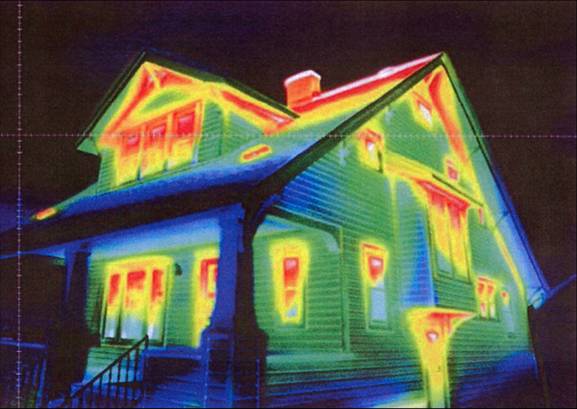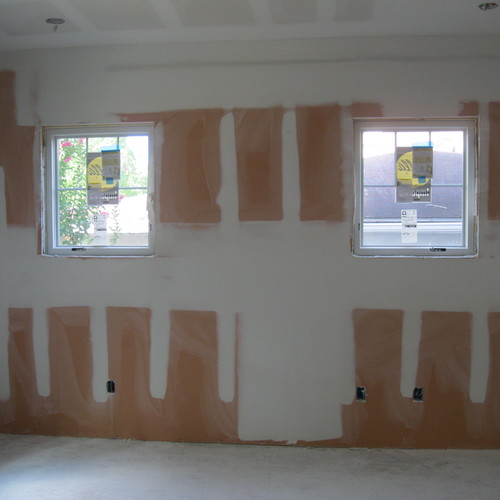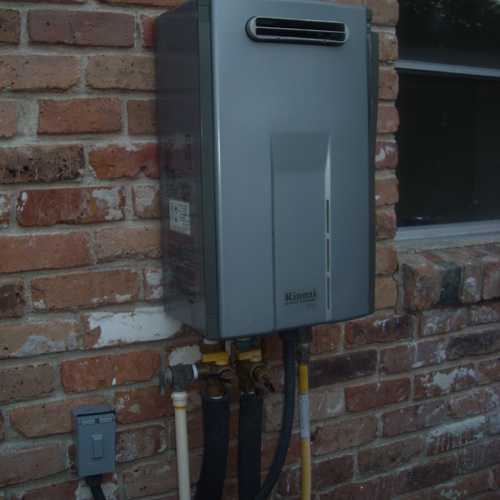
Before I move onto the topic du jour, How to Sell Energy Audits, I want to remind my readers of the context of this series. Remember, when I talk of selling various green options, they are always sold in the context of the house we are building or remodeling.
In the case of energy audits, I will only be talking about remodels. And if anybody but a good past client called us and wanted any of these items as a stand-alone purchase, we would only rarely do the work. Instead, we would typically refer it to a specialty contractor. Just like someone who calls and wants a price on a new roof, someone who calls wanting improved attic ventilation will likely be more cost effectively served by using a company that specializes in these areas and not a general contractor like us.
Where useful, I will also discuss pricing, so that you can get a better understanding of our mark-ups and margins on these extras. This will hopefully inform you that changes to the contract (green or otherwise) — upgrades, additional work requests, etc. — all require changes in paperwork that must be meticulously documented and tracked. You must mark them up and not give them away at no additional cost over what you pay.
OK, with that background behind us, let’s move on to selling energy audits!
We subcontract most of the energy auditing work
Knowing there are lots of different energy audits out there, let me describe the one we conduct. First, we work with a trade partner, Blue Gill Energy, to do the audit, as they have the specialized training and equipment; we do not. We require the homeowner to provide us with copies of their last 12 months of gas, water and electrical bills so that we can establish their baseline energy consumption.
HOW TO SELL GREEN UPGRADESPart One: Radiant Barrier PaintsPart Two: Tankless Water HeatersPart Four: Exhaust FansPart Five: Electrical ImprovementsPart Six: Better InsulationPart Seven: A Few Small Things
Next, we interview the client for about 45 minutes to get a better understanding of how they live in the house, their habits and patterns, the number and type of occupants, etc. Finally, we take photographs — lots of photographs! Using a thermographic camera, we look to find all the usual suspects: unsealed canister lights, missing insulation, missing weatherstripping, water leaks, inadequate sealing around window frames, leaky ducts or return air chases, etc.
The resulting 16-page color report gives the client information on how much energy they use, how they use it, and the best means of reducing their energy bills. Aside from the obvious value of this information, the beauty is that it informs the client of the order in which the work should be done. Most folks want to make improvements, they just don’t know what should be done first: change the windows, add more insulation, change out the HVAC system, etc. Our report defines the low-hanging fruit which will give them the biggest reduction in their energy usage.
Marking up the audit cost
So how have we sold them? Normally we don’t — we just include them as part of our design agreements on our remodeling projects. At the price we pay for the audit (10¢/sq. ft.) the cost is almost negligible. When a client is paying us +$2,000 for a remodeling design agreement, the energy audit becomes part of what we include with the design. The architect comes out to interview the client for the design and the energy auditor comes out to interview the client so that we can put the remodeling plan into the context of how the entire home is currently performing.
Energy audits are one green service, however, that we will conduct as a stand-alone project. We do this in part because there is no established base of companies in our market that offer the service and there is no clear market leader. Additionally, those homeowners that have asked us for an energy audit are either past clients, strong referrals, or they want the audit done as a precursor to a larger remodel.
In essence, these customers “get it”! In such cases we charge 15¢/sq. ft., still small change for a report that will offer countless ways for the homeowner to get their money back, reduce the energy consumption of their home, make it more comfortable and likely improve their indoor air quality.
A sample report helps clinch the sale
In sum, then, we don’t “sell” energy audits. Either we include them as a signature item in our design agreements for our remodels or we are simply responding to a client that asks us for the service. In either case, once the customer sees a sample of the energy audit up front, they ask us for one every time!
Part One of this series: How to Sell Radiant Barrier Paints
Part Two of this series: How to Sell Tankless Water Heaters
Weekly Newsletter
Get building science and energy efficiency advice, plus special offers, in your inbox.















4 Comments
Good article!
I really enjoyed your article, Michael. I was especially interested in the fact that you calculate a custom charge for a residential audit based on square footage. I'm wondering if that's how most energy audit professionals calculate their charges, or if they create a "one size fits all" charge. I do energy audits for my small municipal utility and we only charge a flat rate of $100 for an audit that includes blower door test and thermography. But then again we are subsiziding the cost of the audit, because the cost of the labor alone to do an audit and create a report is probably in excess of $300.
What others charge
I'm glad you enjoyed the article Curtis. You know having been a custom builder/remodeler all my life I just have looked at all our pricing on a custom basis-every client, project and home is different. Thus, it has been difficult for me to standardize any pricing. My guess is that companies simply charge a flat rate per foor and leave it at that. At $ 100.00 your customers are getting the deal of a lifetime because I can see the labor on that easily being the $ 300.00 you mentioned. Unlike a utility we can subsidize our costs as well if we choose by offering to apply the cost of the audit to the remodeling project.
How to sell Energy Audits
Michael,
i enjoyed reading your article and am interested in learning more. I have just been accepted into a Weatherization Program offered at my local PTEC institute and will begin certification classes next week. As an architectural designer I am looking to expand my capabilities and diversify my company in an area that the construction trades are struggling in this economy. Any insights would be welcome. Thanks, Steve
Let's talk Steve
Steve I would love to talk more with you about your opportunities. Feel free to email me at [email protected] unless you have some specific questions I can answer for you here.
Log in or create an account to post a comment.
Sign up Log in